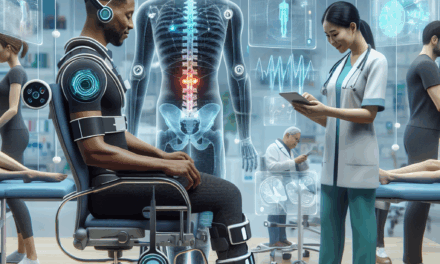Transforming Orthodontic Treatment with Virtual Consultations
The landscape of orthodontic treatment is undergoing a significant transformation, driven by advancements in technology and changing patient expectations. Virtual consultations have emerged as a game-changer in the field, offering a convenient, efficient, and patient-centered approach to orthodontic care. This article delves into the various aspects of virtual consultations in orthodontics, exploring their benefits, challenges, and future potential. We will cover five key subtopics: the evolution of orthodontic consultations, the technology behind virtual consultations, patient experiences and satisfaction, the impact on treatment outcomes, and the future of orthodontics in a digital age.
The Evolution of Orthodontic Consultations
Orthodontic consultations have traditionally involved in-person visits, where patients would meet with their orthodontists to discuss treatment options, undergo examinations, and receive personalized care plans. However, the rise of digital technology has paved the way for virtual consultations, which have gained traction in recent years.
Historically, orthodontic practices relied heavily on face-to-face interactions. Patients would schedule appointments, often taking time off work or school, to visit the clinic. This model, while effective, posed several challenges:
- Time-consuming: Patients had to allocate significant time for travel and waiting, which could lead to missed appointments.
- Accessibility: Individuals in remote areas or with mobility issues faced barriers to accessing orthodontic care.
- Limited flexibility: Traditional consultations often required patients to adhere to the clinic’s schedule, which may not align with their personal commitments.
With the advent of telehealth and digital communication tools, orthodontic practices began to explore virtual consultations as a viable alternative. The COVID-19 pandemic accelerated this shift, as many practices were forced to adapt to social distancing measures. Virtual consultations allowed orthodontists to continue providing care while minimizing the risk of virus transmission.
Today, virtual consultations have become an integral part of many orthodontic practices. They offer a range of benefits, including:
- Convenience: Patients can attend consultations from the comfort of their homes, eliminating travel time and associated costs.
- Increased access: Virtual consultations make orthodontic care more accessible to individuals in underserved areas.
- Enhanced communication: Digital platforms facilitate real-time communication between patients and orthodontists, allowing for quick responses to questions and concerns.
As the orthodontic field continues to evolve, virtual consultations are likely to play an increasingly prominent role in patient care, reshaping the way orthodontic treatment is delivered.
The Technology Behind Virtual Consultations
The success of virtual consultations in orthodontics hinges on the effective use of technology. A variety of tools and platforms have emerged to facilitate remote consultations, each offering unique features that enhance the patient experience.
Key technologies that support virtual consultations include:
- Video Conferencing Software: Platforms like Zoom, Microsoft Teams, and Doxy.me enable real-time video interactions between patients and orthodontists. These tools allow for face-to-face communication, which is crucial for building rapport and trust.
- Mobile Applications: Many orthodontic practices have developed proprietary apps that allow patients to upload photos, track their treatment progress, and communicate with their orthodontist. These apps often include features like appointment scheduling and reminders.
- 3D Imaging and Scanning: Advanced imaging technologies, such as intraoral scanners, enable orthodontists to create detailed digital models of patients’ teeth and jaws. This data can be shared during virtual consultations, allowing for more accurate assessments and treatment planning.
- Artificial Intelligence: AI-driven tools can analyze patient data and provide orthodontists with insights into treatment options. These tools can streamline the decision-making process and enhance the overall efficiency of virtual consultations.
For example, a study published in the American Journal of Orthodontics and Dentofacial Orthopedics found that the use of 3D imaging in virtual consultations improved diagnostic accuracy and treatment planning. Orthodontists were able to visualize patients’ dental structures in real-time, leading to more informed decisions.
Moreover, the integration of secure communication channels ensures that patient data remains confidential and compliant with regulations such as HIPAA. This is crucial for maintaining patient trust and ensuring the ethical delivery of care.
As technology continues to advance, we can expect further innovations in virtual consultation tools, enhancing the overall experience for both patients and orthodontists.
Patient Experiences and Satisfaction
One of the most significant advantages of virtual consultations is the positive impact on patient experiences and satisfaction. Research indicates that patients appreciate the convenience and flexibility offered by remote consultations, leading to higher levels of engagement and compliance with treatment plans.
A survey conducted by the American Association of Orthodontists (AAO) revealed that:
- Over 70% of respondents preferred virtual consultations due to the convenience of attending appointments from home.
- More than 60% reported feeling more comfortable discussing their concerns in a virtual setting.
- Patients noted that virtual consultations reduced anxiety associated with in-person visits, particularly for those with dental phobias.
Additionally, virtual consultations allow for greater flexibility in scheduling. Patients can choose appointment times that fit their busy lives, reducing the likelihood of missed appointments. This flexibility is particularly beneficial for parents managing multiple schedules or individuals with demanding work commitments.
Case studies further illustrate the positive impact of virtual consultations on patient satisfaction. For instance, a dental practice in California implemented virtual consultations during the pandemic and reported a 40% increase in patient satisfaction scores. Patients appreciated the ability to receive timely feedback on their treatment progress without the need for in-person visits.
Moreover, virtual consultations foster a sense of continuity in care. Patients can easily reach out to their orthodontist with questions or concerns, leading to more proactive management of their treatment. This ongoing communication helps build trust and strengthens the patient-provider relationship.
However, it is essential to acknowledge that not all patients may feel comfortable with virtual consultations. Some individuals may prefer the traditional in-person experience, particularly when it comes to complex cases that require hands-on assessments. Therefore, orthodontic practices should offer a hybrid model that accommodates both virtual and in-person consultations, ensuring that all patients receive the care they need in a manner that suits their preferences.
The Impact on Treatment Outcomes
The effectiveness of orthodontic treatment is often measured by the outcomes achieved at the end of the treatment process. Virtual consultations have the potential to influence treatment outcomes positively by enhancing communication, improving patient compliance, and facilitating timely interventions.
Research has shown that effective communication between orthodontists and patients is crucial for successful treatment outcomes. Virtual consultations enable orthodontists to provide clear instructions and guidance, ensuring that patients understand their treatment plans and the importance of adhering to them. This clarity can lead to improved compliance with wearing aligners or attending follow-up appointments.
Furthermore, virtual consultations allow for more frequent check-ins, enabling orthodontists to monitor progress closely. For example, a study published in the Journal of Clinical Orthodontics found that patients who participated in regular virtual check-ins experienced shorter treatment times and fewer complications compared to those who relied solely on in-person visits.
Timely interventions are another critical factor in achieving optimal treatment outcomes. Virtual consultations enable orthodontists to identify potential issues early on, allowing for prompt adjustments to treatment plans. For instance, if a patient reports discomfort or misalignment during a virtual check-in, the orthodontist can quickly assess the situation and make necessary changes, preventing further complications down the line.
Moreover, the use of digital tools, such as 3D imaging and AI-driven analytics, enhances the accuracy of treatment planning. Orthodontists can create customized treatment plans based on detailed data, leading to more predictable outcomes. This level of precision is particularly beneficial for complex cases that require careful consideration of various factors.
However, it is essential to recognize that virtual consultations may not be suitable for all cases. Complex orthodontic issues may still require in-person assessments to ensure accurate diagnoses and treatment planning. Therefore, a balanced approach that combines virtual and in-person consultations is crucial for achieving the best possible outcomes for patients.
The Future of Orthodontics in a Digital Age
The future of orthodontics is undoubtedly intertwined with advancements in digital technology. As virtual consultations continue to gain popularity, we can expect several trends to shape the future of orthodontic care.
One significant trend is the increasing integration of artificial intelligence and machine learning in orthodontic practices. These technologies can analyze vast amounts of patient data to identify patterns and predict treatment outcomes. For instance, AI algorithms can assess treatment progress and recommend adjustments based on real-time data, streamlining the decision-making process for orthodontists.
Additionally, the rise of teledentistry is likely to expand the scope of virtual consultations. Teledentistry encompasses a broader range of dental services, including preventive care and emergency consultations. As patients become more accustomed to virtual interactions, orthodontists may find opportunities to collaborate with general dentists and specialists to provide comprehensive care through digital platforms.
Moreover, the development of user-friendly mobile applications will enhance patient engagement and empowerment. Patients will have access to tools that allow them to track their treatment progress, communicate with their orthodontist, and receive personalized reminders. This level of engagement can lead to improved compliance and satisfaction.
Furthermore, as telehealth regulations continue to evolve, we can expect increased reimbursement options for virtual consultations. This shift will encourage more orthodontic practices to adopt virtual care models, making it a standard part of orthodontic treatment.
In conclusion, the transformation of orthodontic treatment through virtual consultations represents a significant advancement in patient care. By leveraging technology, orthodontists can provide convenient, accessible, and effective care that meets the needs of today’s patients. As we look to the future, it is clear that virtual consultations will play a pivotal role in shaping the orthodontic landscape, enhancing patient experiences, and improving treatment outcomes.
Conclusion
In summary, virtual consultations are revolutionizing orthodontic treatment by offering a more convenient and patient-centered approach. The evolution of consultations from traditional in-person visits to virtual interactions has been driven by technological advancements and changing patient expectations. The technology behind virtual consultations, including video conferencing, mobile applications, and AI-driven tools, enhances the overall experience for both patients and orthodontists.
Patient experiences and satisfaction have improved significantly, with many individuals appreciating the flexibility and accessibility of virtual consultations. The impact on treatment outcomes is also noteworthy, as effective communication and timely interventions contribute to better results. Looking ahead, the future of orthodontics is poised for further transformation as digital technologies continue to advance, paving the way for a more integrated and efficient approach to orthodontic care.
As orthodontic practices embrace virtual consultations, they must remain mindful of the diverse needs of their patients, offering a hybrid model that accommodates both virtual and in-person care. By doing so, they can ensure that all patients receive the highest quality of care tailored to their preferences and circumstances.





